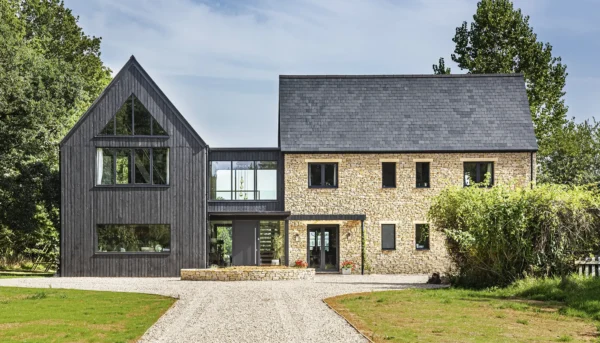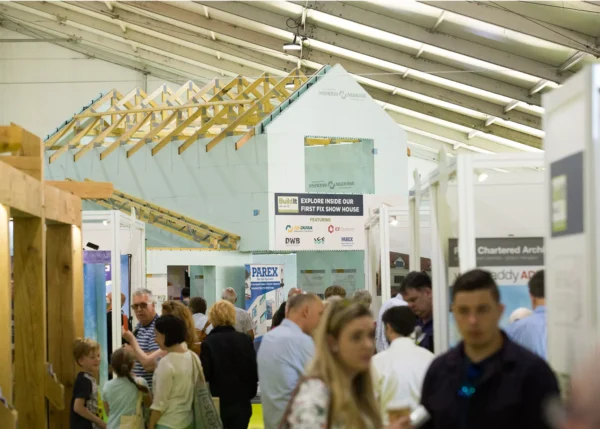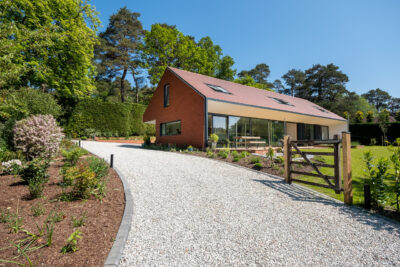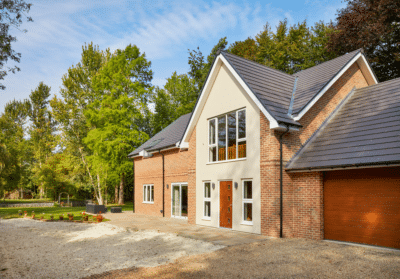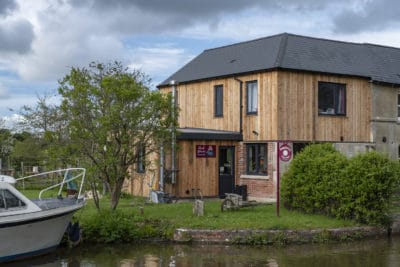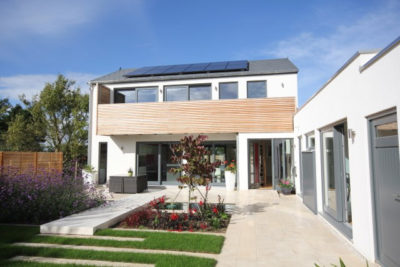Build It Awards Shortlist: Best Self Build Home or Renovation Project 2022
Build It’s editorial team, and our esteemed Awards judges, have been sifting through the amazing self build, renovation, extension and conversion projects featured in the magazine over the last 12 months to create this year’s Best Home shortlist.
These six inspiring projects are all worthy of being crowned the Build It Award’s Best Self Build or Renovation Project of 2022!
The winner of the Best Self Build or Renovation Project 2022, sponsored by Self Build Zone, will be chosen by you, Build It magazine’s readers.
Explore these stunning homes, and the inspiring stories behind them, in the Best Home shortlist below!
Voting has now closed and the winner will be announced in a special ceremony on 25th November. Look out for all our 2022 award-winners in an upcoming edition of Build It!
Best Self Build or Renovation Project 2022: The Shortlist
Angela & Andrew Eggerton: Nordic-Inspired Timber Frame Home
When Angela and Andrew Eggerton decided to create a bespoke home in their native Aberdeenshire, the process wasn’t without its moments of drama. From purchasing the site remotely from Canada, to Covid hitting halfway through the build, there were some tense moments.
The project started when the couple, who were then based in Canada, received a call from Angela’s brother, Eoghain Fiddes, of Aberdeenshire-based Fiddes Architects. “A plot became available through former clients – they’d bought the site, but decided not to build,” explains Eoghain. Angela and Andrew seized the opportunity to purchase the land instead.
The plan was to clear a derelict cottage and build a new home designed around their family’s requirements. The Eggertons had previously lived in Norway, which influenced their main ideas for the design. “We loved our Nordic house – it was bright and open-plan, with wooden floors and a heat pump,” says Angela.
When Eoghain came back with layout options, a design for a moderately sized family house emerged. The Eggertons wanted a simple, contemporary look, along with a natural colour palette. “They were keen on a clean design with neat junctions between the roof and walls and concealed gutters,” says Eoghain. “This was behind the idea of the fibre cement slate used on the roof, which continues down and forms the cladding.”
Silicone render has been used on the main gables and garage, with larch cladding on the single storey open-plan living area. The final design sailed through planning. Following the tender process the main contractor went on site in late 2019. By this stage the Eggertons were living nearby, with the intention of supervising the build.
This initially went to plan, with demolition of the cottage followed by the foundations and installation of the 140mm timber kit. After eight weeks the building was wind and watertight – but then the pandemic hit.
The schedule was knocked off course with the nine-month contract delayed by three months. “It was fine in the end,” says Angela. “When the contractor started again the team really went for it. We made decisions we stuck to, which meant that there were no further delays.”
The house performs optimally in terms of its energy efficiency. It features a highly insulated envelope to reduce heat loss and cold bridging, while increasing air tightness. A wet underfloor heating system was chosen, powered by a Samsung air source heat pump. “The heat pump is fantastic,” says Angela. “We love our new house.”
| OWNERS: | Angela & Andrew Eggerton |
| PROJECT: | Self Build |
| LOCATION: | Banchory, Scotland |
| SIZE: | 255m2 |
| PROJECT COST: | £460,000 |
| COST PER M2 | £1,804 |
Royan & Helen Anthony: Contemporary Oak Build
After decided to downsize, Royan and Helen Anthony spent two years searching for a house in and around their village. “We’d bought our home 25 years before and it had a half-acre paddock,” says Royan.
Though the previous owners had been refused permission to build on the land, the couple decided to explore the possibility of constructing a new home there. They were drawn to the idea of a low-maintenence house with character. “Oak spoke to both of us, we loved its warmth,” says Royan.
The search for an oak framer soon began, and when Royan and Helen went to visit Welsh Oak Frame’s factory they found the team friendly and were delighted with the different house designs on offer. As part of the process, the pair went to visit the home of a couple who had previously built with the company.
They loved the double-storey glass atrium at the back of the house. Royan and Helen adjusted this design to suit their taste, settling on a more contemporary look with fewer exposed oak beams and more glass. The planning application was submitted in July 2016. Once a sticking point with the brick cladding had been addressed, they received approval.
The couple are both experienced renovators, plus Royan is a production engineer and project manager in the automotive and aeronautics industry. During the self build, he mostly worked away three days a week and project managed alongside Helen. Together they created a detailed timeline, marking all the major milestones, plus the trades and materials required.
The build began in March 2017 with groundsman Neil Harvey doing the groundwork and foundations. The biggest challenge the couple faced was sorting out the drainage – foul drains and surface water run-off.
While preparing drawings for Building Regs, measurements showed the ground level of the paddock was lower than the mains. There wouldn’t be the ‘fall’ needed for a gravity drain system so an alternative solution had to be found.
After sorting out the drainage problems and laying the foundations, the oak frame arrived. “Helen had been to see the oak being cut in Welsh Oak Frame’s workshop, and sometime after everything arrived on three massive lorries,” says Royan. “The oak was marked so it could be pieced together like a jigsaw, which was a fascinating and exhilarating moment to watch.”
Royan and Helen’s new oak home was ready for them to move into 15 months after starting on site – and they’re thrilled with the results. “Building in oak was the perfect solution for us,” says Royan. “We have the convenience of modern living with the character of oak.”
| OWNERS: | Royan & Helen Anthony |
| PROJECT: | Self Build |
| LOCATION: | Cheshire |
| SIZE: | 238m2 |
| PROJECT COST: | £470,000 |
| COST PER M2 | £1,975 |
Paloma & Frank Gilks: Modern Extension to a Period Property
As seasoned renovators, Frank and Paloma Gilks knew a good thing when they saw it. So, when they found a crumbling Victorian terrace house in West London, they jumped at the chance to rescue it. Due to structural issues, caused by the attic water tank exploding, it was considered unmortgageable, but Frank took one look at the photos and immediately recognised its potential.
Before they’d even exchanged, Frank visited a property a few doors down, which already had a modern extension. “I looked at what work had been done and examined the planning drawings,” Frank says. “I used these designs as the basis for my own. I knew if I stayed within those parameters the council shouldn’t refuse our proposal.” Frank’s plan worked and the pair received the green light to go ahead.
After reviewing their tender quotes, Frank and Paloma engaged GMC London and took on project management responsibilities themselves. Work had just started on site when the first lockdown hit. “Luckily, builders were able to continue working, which meant the scheme could carry on with limited setbacks,” says Frank.
However, the pandemic did cause other issues. To buy the £930,000 property, Frank and Paloma pulled together their savings and borrowed £620,000 from Halifax, but as soon as lockdown hit, they both took pay cuts.
“It didn’t change our monthly income that much, but it affected our mortgage options,” says Frank. “We needed a Second Charge Loan to pay for the internal works, but suddenly we could only borrow £20,000 of the £70,000 we needed.”
The couple were forced to revaluate their approach. They borrowed money where they could and made design adjustments. For instance, they opted to complete the loft work as a shell that could be kitted out later. Plus, they decided to only replace the timber sash windows at the front of the house, leaving the originals in place at the rear.
Despite lockdown, the builders made good progress. Almost all of the internal woodwork and plaster was removed and a new roof installed. The property was completely rewired and replumbed, too. After seven months, the house was move-in ready.
Light-filled, free-flowing and decked out with gorgeous period features, the interior allows the history of the building to do all the talking. Every room beautifully blends traditional Victorian elements with modern touches.
“The final fix was extremely laborious, especially painting the new cornicing,” says Frank. “But when you start to unpack boxes, you start to see the house as your home. It was hard, but nice to tackle such an amazing project with Paloma.”
| OWNERS: | Frank & Paloma Gilks |
| PROJECT: | Renovation & Extension |
| LOCATION: | West London |
| SIZE: | 201m2 |
| PROJECT COST: | £212,446 |
| PROJECT COST PER M2: | £1,650 |
Miles & Maxine Hancock: Striking Steel Frame Home
With its mix of contemporary design and use of vernacular materials, this home in the Cotswolds is packed with interest and detail. Its idyllic aesthetic hides any sense of the testing journey to project completion – which is a distant memory to owners Miles and Maxine Hancock.
The couple had always been fond of the area and when Miles sold his engineering business and was looking for a project to keep busy, he came across a site online. Self building had always piqued his interest, so he decided to take a closer look.
The plot was advertised with planning for a 225m2 dwelling. It was one of three self build opportunities on the site. “I went to view it and made an offer the next day,” says Miles.
As the project came with outline planning consent, it made sense to take the plans through to detailed consent – which took about a year. “We already loved the architect’s design, though we did make some tweaks,” says Miles.
From there, things moved on to groundworks and development. “We hired a professional project manager across the three plots and they helped organise all the works,” says Miles. There was a derelict house, which needed to be removed, plus other clearance works. The costs were shared across the three plots, which made things more budget-friendly.
The house was set to have pile foundations, but there was an old quarry discovered amidst the works, which meant a change to concrete raft foundations. Next, it was time for the house itself to develop – the first step was to erect the steel frame, which came with its own challenges. “In comparison to some other systems, it’s a complex build method, but it was needed for the design – there’s a floating roof, cantilevers at front and back and wide, open spaces inside.”
The project was hit with more delays when pieces of the frame were missing. When they were made available, terrible wind conditions halted progress. “I hadn’t expected that weather would delay us,” says Miles. “There was a two-month delay due to Covid, too. Over 24 months of construction, six or seven months was spent in delays.”
Once the steel frame was completed, the Hancocks could see the house taking shape. Their home is the first of the three properties to complete on the site. The couple are proud of what they’ve achieved. In fact, Miles enjoyed the self build process so much that he’s already planning his next project. “There are so many different things we’ve done with this house; I’ve learned processes and skills for the next one!”
| OWNERS: | Miles & Maxine Hancock |
| PROJECT: | Self Build |
| LOCATION: | Gloucestershire |
| SIZE: | 225m2 |
| PROJECT COST: | £830,000 |
| PROJECT COST PER M2 | £3,688 |
Harry Antonious & Catherine Hews: Hands-On Bungalow Transformation
After spending 18 months doing up their home in Cheltenham, builder Harry Antonious and his partner Catherine Hews spotted a chalet bungalow for sale. After driving past the property, Harry was immediately drawn to it, and asked Catherine to come and see it, too.
The couple decided to go ahead with purchasing the 1950s chalet via a probate sale. “The house was dilapidated,” Harry says. “I remember Catherine and I sat in a coffee shop, tentatively waiting to hear if we’d got the house. I sketched some ideas for improving it on our café receipt. I particularly wanted spectacular gable window at the front.”
Harry had architects Jason Jackson and Vince Marlow, whom he had worked with before, give their input on the final design. Planning was granted with no hiccups and excavations for the foundations began.
A completely enclosed scaffold was erected, with sheeting to protect the building once it was gutted. This allowed work to carry on regardless of the weather. “Once the extensions were built up to floor plate level, the main roof came off down to joist level,” Harry says. “The internal walls were removed except for two on the ground floor, leaving just a shell.”
Harry and his team then rebuilt the roof from scratch as a traditional timber cut roof, accommodating a new dormer with a new rear master bedroom.
Harry was very hands on throughout the development. At one point, early on in the build, Harry was working on his own, as his team were working on other projects. “I was up on the roof by myself day after day, doing the sort of work which really requires at least two people,” he says.
The planners wouldn’t allow the existing level of the bungalow ridge to be increased, so the first floor walls were limited in height, but Harry designed the rooms so that they were vaulted. This gives a feeling of height and allows sunshine into every area of the house.
After a great deal of heavy labour the house was completed. No one who had known the unassuming original property would recognise the spectacular abode it has been transformed into.
The dramatic two storey extension at the front of the house forms the standout design feature, thanks to the huge gable window. “I’ve always wanted to create something modern, sleek and contemporary,” says Harry. “Now it’s a lovely family home with more than enough room for us all.”
| OWNERS: | Harry Antonious & Catherine Hews |
| PROJECT: | Renovation & Extension |
| LOCATION: | Cheltenham |
| SIZE: | 271m2 |
| PROJECT COST: | £184,500 |
| COST PER M2 | £680 |
 Simon & Julie Gibson: New England-Style Self Build
Simon & Julie Gibson: New England-Style Self Build
Living in a two-bed Berkshire apartment, Simon and Julie Gibson realised they’d downsized a step too far. “With grumbles of our children coming back to live with us, we realised we’d need more space,” says Simon.
The couple put out feelers for a suitable home in Hampshire. After three years of viewing and rejecting houses, they came across a run-down bungalow. After seeing the property, they knew it was the one. “The bungalow was nasty – it would have to have come down – but the views were breathtaking,” says Julie.
“The land came with planning permission, but we weren’t keen on the design,” says Simon. After a visit to the National Self Build and Renovation Centre (NSBRC) in Swindon, the couple enlisted timber frame specialist Potton to design their home.
Timber frame offered the couple a highly insulated home with an excellent timescale, for a competitive price, too. “We gave them a shopping list,” says Julie. “I wanted something modern-ish in a New England style.”
Their Potton designer, Shaun Adams, incorporated these wishes into a house plan and submitted it to the local council. The process went smoothly with permission granted in eight weeks, but when work on the footings started, Julie had an epiphany. “The foundations were set far too far back on the plot,” she says. “It would have left us with a tiny back garden.” A fresh application had to be made to move the house further forward on the site.
Construction started with the demolition of the derelict bungalow. As the property came down, it transpired that there was asbestos in the roof. “We had to get some specialists in to deal with it safely, which added two or three days to the project,” says Simon.
“It was my responsibility to make sure the slab was all in order for the timber frame,” says Simon, who project managed the scheme. Foundations for a timber frame need to be accurate – there’s a tiny margin for error. “When Potton came on site, they brought a bunch of lasers to ensure everything was level,” says Simon. This stage went off without a hitch, and when the frame was delivered it was erected in a couple of weeks.
Now complete, the couple’s four-bedroom modern abode is very different to their previous apartment. There’s plenty of space for their grown-up children and an open-plan kitchen-diner for sociable living – which is Simon and Julie’s favourite part of the home.
The Gibsons now have a cosy, comfortable home, which can accommodate their family and friends. “I don’t think we’d build again,” says Julie. “But if we did, we’ve certainly learned a lot from the process!”
| OWNERS: | Simon & Julie Gibson |
| PROJECT: | Self Build |
| LOCATION: | Hampshire |
| SIZE: | 535m2 |
| PROJECT COST: | £1,176,000 |
| COST PER M2 | £3,249 |
 |
Voting for this category closes on 1st November 2022. The Build It Awards Best Self Build or Renovation Project 2022 is sponsored by leading self build insurance and warranty specialist Self-Build Zone. |
Please see individual articles for photography credits

















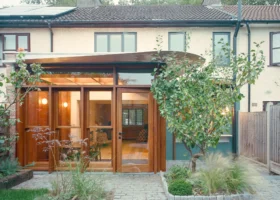













































































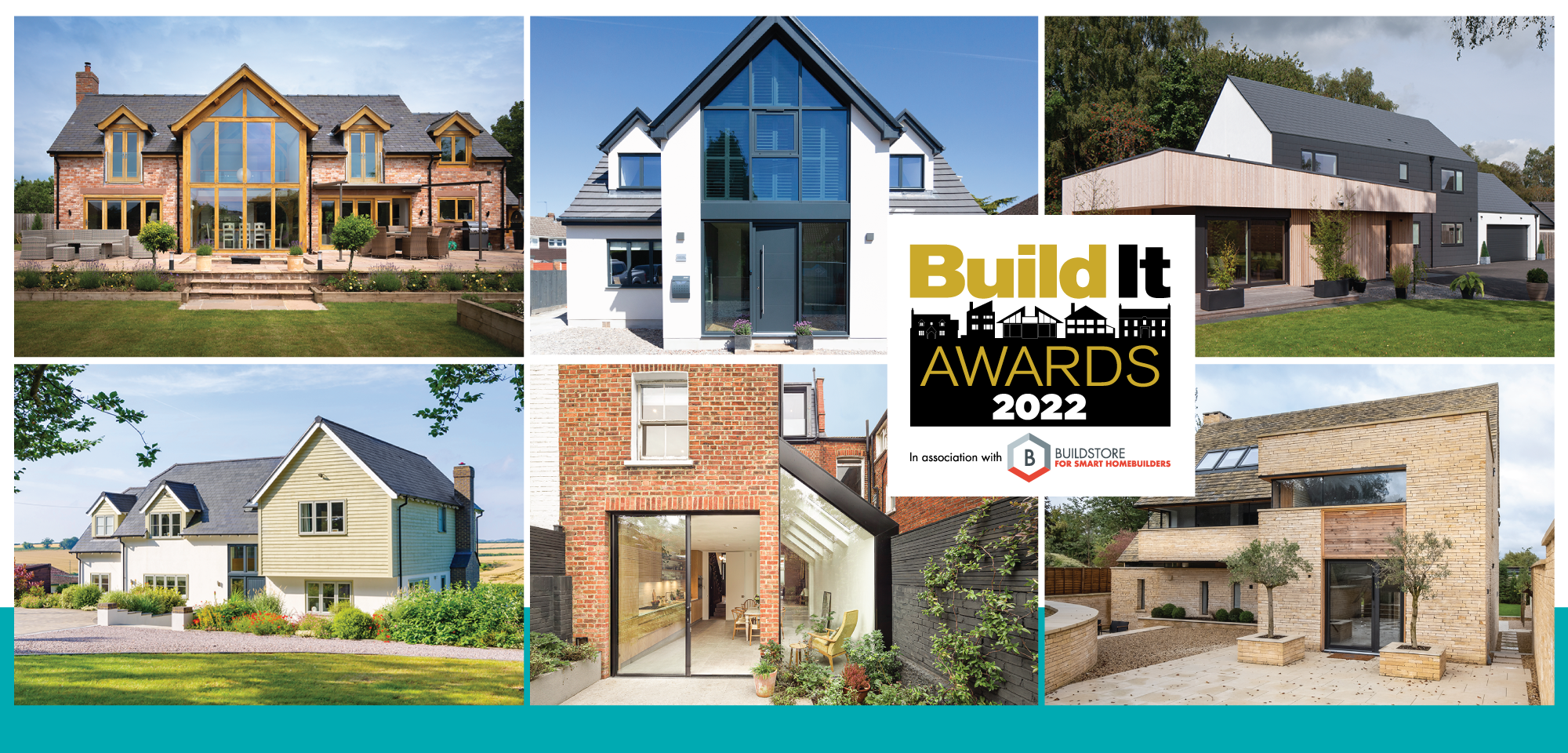
 Login/register to save Article for later
Login/register to save Article for later

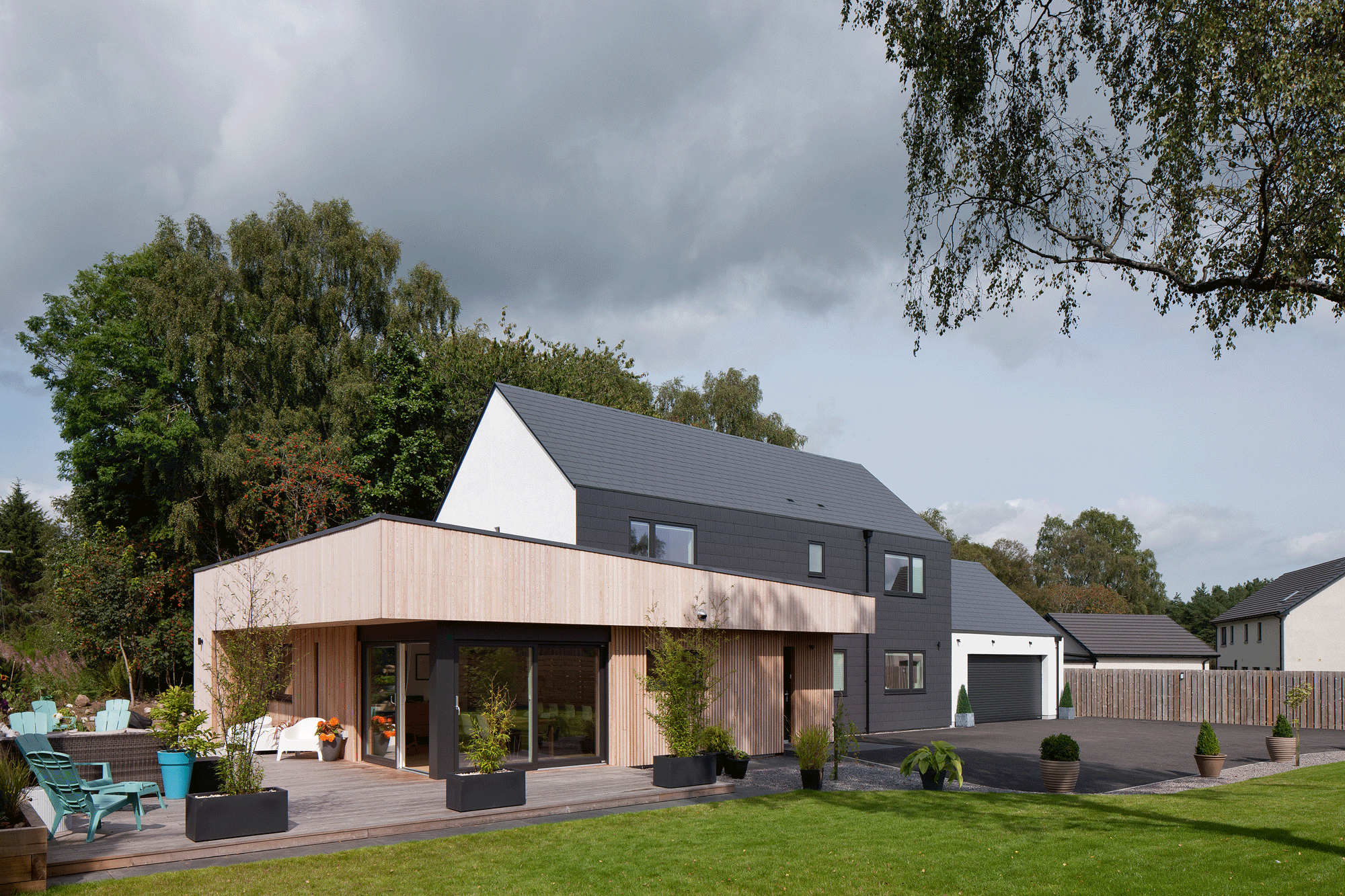
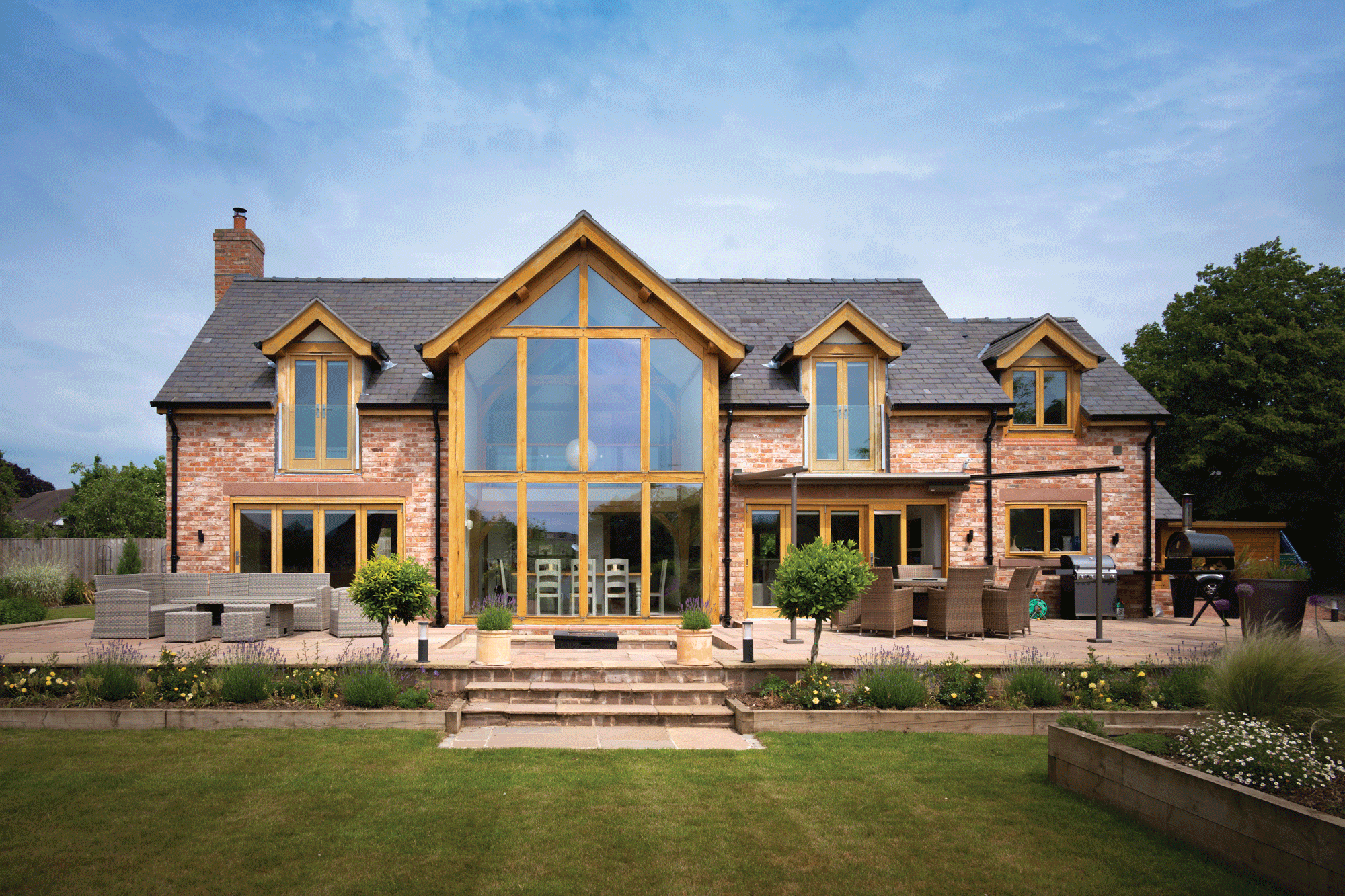
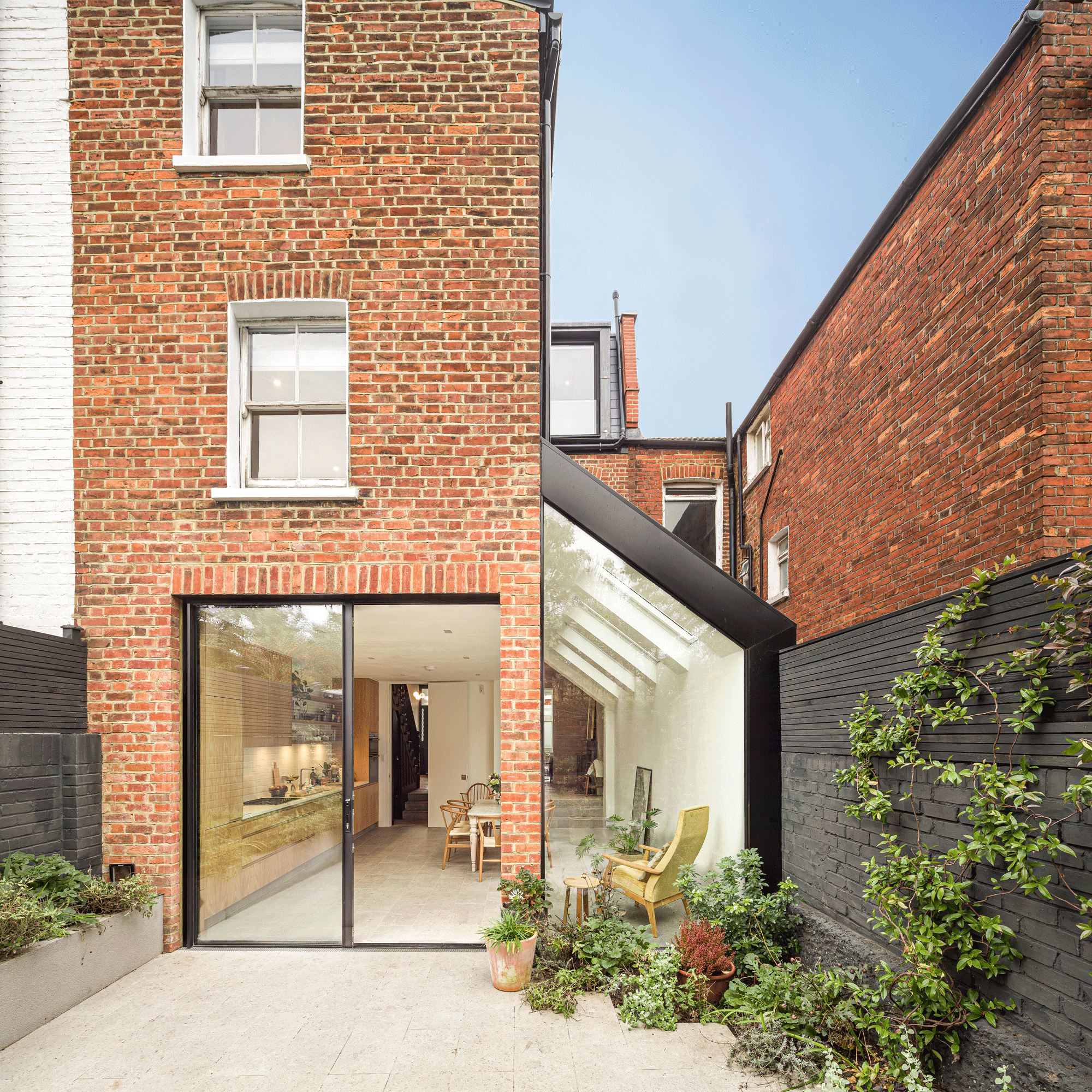
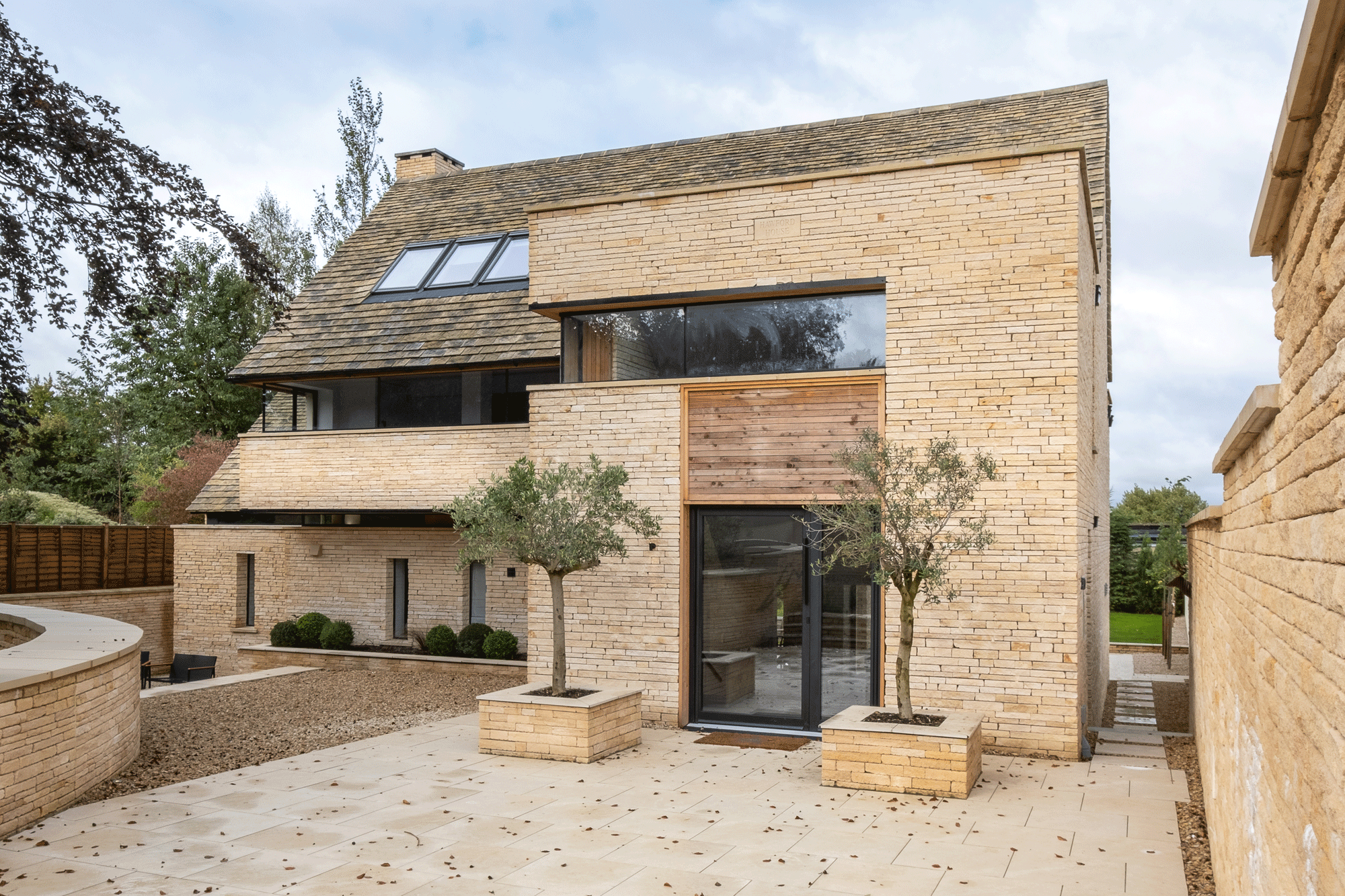
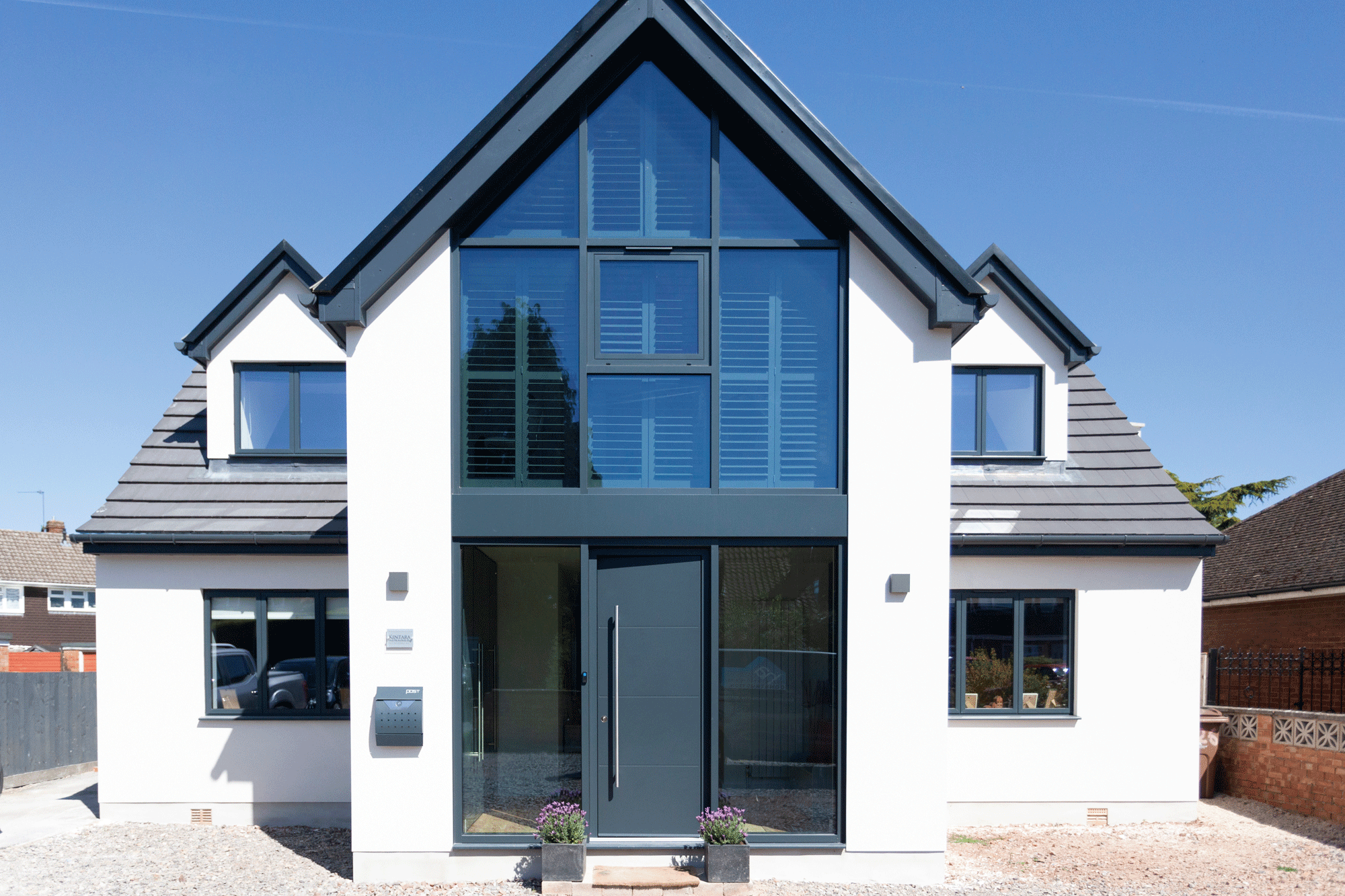
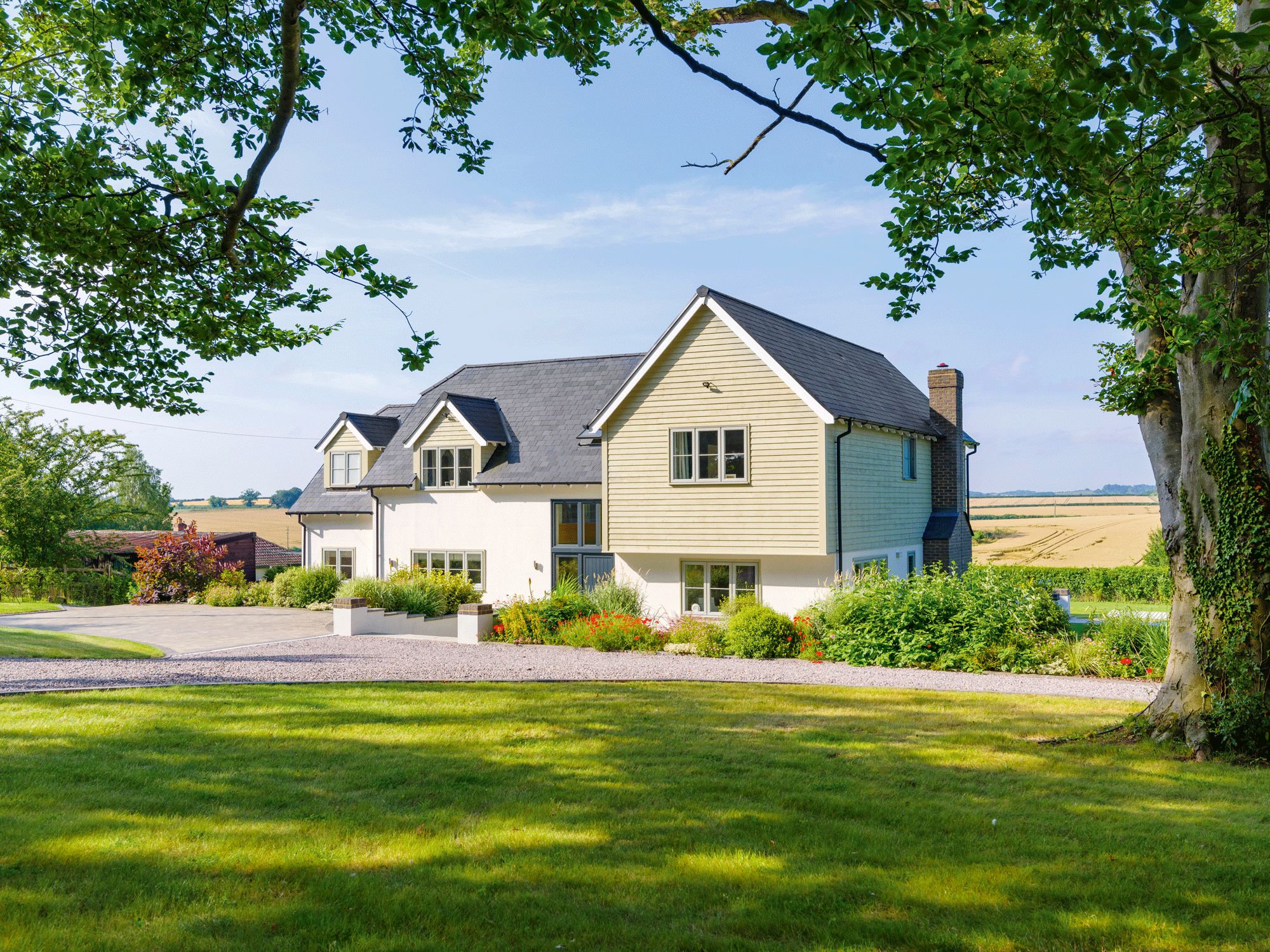 Simon & Julie Gibson: New England-Style Self Build
Simon & Julie Gibson: New England-Style Self Build
